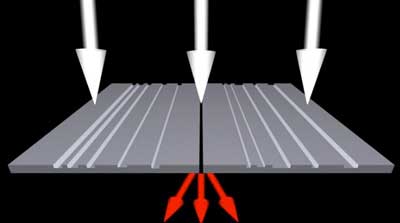 Scientists have for the first time, developed nanoscale devices that divide incident white light into its component colors based on the direction of illumination, or directs these colors to a predetermined set of output angles.
Scientists have for the first time, developed nanoscale devices that divide incident white light into its component colors based on the direction of illumination, or directs these colors to a predetermined set of output angles.
Nov 7th, 2017
Read more
 Researchers have learned the mechanisms behind a common type of failure in lithium-ion batteries caused by the formation and growth of dendrites, findings that could aid in the design of faster-charging and longer-lasting batteries.
Researchers have learned the mechanisms behind a common type of failure in lithium-ion batteries caused by the formation and growth of dendrites, findings that could aid in the design of faster-charging and longer-lasting batteries.
Nov 7th, 2017
Read more
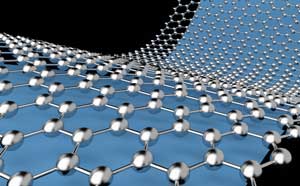 An international team of scientists has discovered a new route to ultra-low-power transistors using a graphene-based composite material.
An international team of scientists has discovered a new route to ultra-low-power transistors using a graphene-based composite material.
Nov 7th, 2017
Read more
 An unexpected improvement of the photovoltaic performance was observed when perovskites produced by mechanochemistry were used for the construction of a typical photovoltaic cell.
An unexpected improvement of the photovoltaic performance was observed when perovskites produced by mechanochemistry were used for the construction of a typical photovoltaic cell.
Nov 7th, 2017
Read more
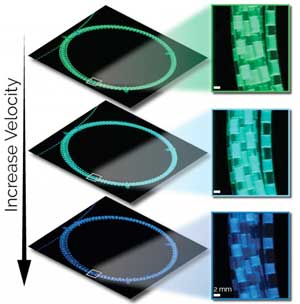 Researchers have developed a technique that allows users to collect 100 times more spectrographic information per day from microfluidic devices, as compared to the previous industry standard.
Researchers have developed a technique that allows users to collect 100 times more spectrographic information per day from microfluidic devices, as compared to the previous industry standard.
Nov 7th, 2017
Read more
 Cost-effective optical manipulation platform suitable for mass production of electronic and light-based devices.
Cost-effective optical manipulation platform suitable for mass production of electronic and light-based devices.
Nov 7th, 2017
Read more
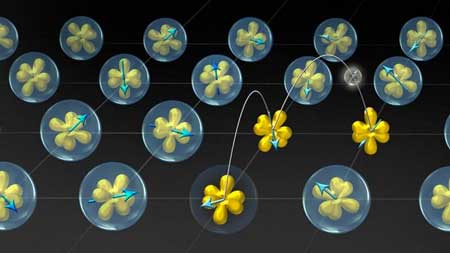 There's been an unsolved mystery associated with mixed valence compounds: When the valence state of an element in these compounds changes with increased temperature, the number of electrons associated with that element decreases, as well. But just where do those electrons go? Using a combination of state-of-the-art tools, researchers have come up with the answer.
There's been an unsolved mystery associated with mixed valence compounds: When the valence state of an element in these compounds changes with increased temperature, the number of electrons associated with that element decreases, as well. But just where do those electrons go? Using a combination of state-of-the-art tools, researchers have come up with the answer.
Nov 7th, 2017
Read more
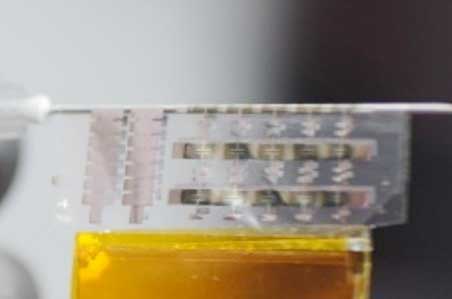 Researchers have reported ultra-flexible organic flash memory that is bendable down to a radius of 300 micron. The memory exhibits a significantly-long projected retention rate with a programming voltage on par with the present industrial standards.
Researchers have reported ultra-flexible organic flash memory that is bendable down to a radius of 300 micron. The memory exhibits a significantly-long projected retention rate with a programming voltage on par with the present industrial standards.
Nov 7th, 2017
Read more
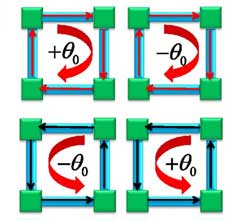 A team of scientist proposes the realization of two-dimensional topological insulators by classical optical networks.
A team of scientist proposes the realization of two-dimensional topological insulators by classical optical networks.
Nov 7th, 2017
Read more
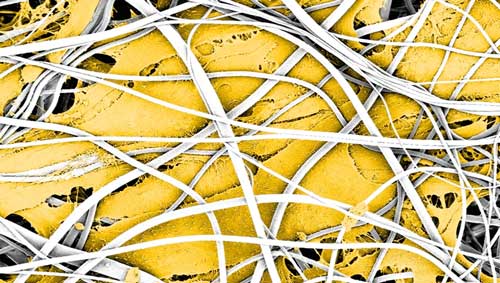 By means of a spraying process, scientists have created functioning muscle fibers.
By means of a spraying process, scientists have created functioning muscle fibers.
Nov 7th, 2017
Read more
 Researchers describe a Nano-CT device that creates three-dimensional x-ray images at resolutions up to 100 nanometers.
Researchers describe a Nano-CT device that creates three-dimensional x-ray images at resolutions up to 100 nanometers.
Nov 7th, 2017
Read more
 Scientists propose a method to go beyond special relativity and simulate Einstein's theory of general relativity in inhomogeneous Weyl semimetals.
Scientists propose a method to go beyond special relativity and simulate Einstein's theory of general relativity in inhomogeneous Weyl semimetals.
Nov 7th, 2017
Read more
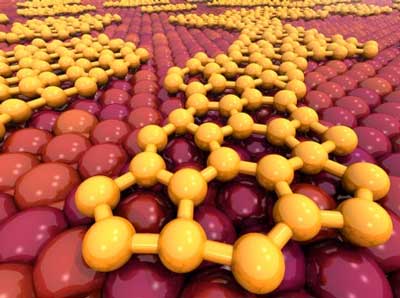 Researchers have simulated the growth of silicene, a 2-D material with attractive electronic properties. Their work delivers new and useful insights on the material?s properties and behavior and offers a predictive model for other researchers studying 2-D materials.
Researchers have simulated the growth of silicene, a 2-D material with attractive electronic properties. Their work delivers new and useful insights on the material?s properties and behavior and offers a predictive model for other researchers studying 2-D materials.
Nov 6th, 2017
Read more
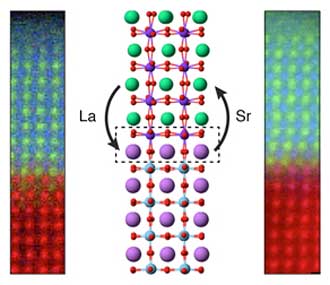 Harnessing lost atoms may aid in crafting new, never-before-seen oxides.
Harnessing lost atoms may aid in crafting new, never-before-seen oxides.
Nov 6th, 2017
Read more
 The paper, laced with conductive nanomaterials, can be employed as a switch, turning on or off an LED light or an alarm system indicating the absence or presence of water.
The paper, laced with conductive nanomaterials, can be employed as a switch, turning on or off an LED light or an alarm system indicating the absence or presence of water.
Nov 6th, 2017
Read more
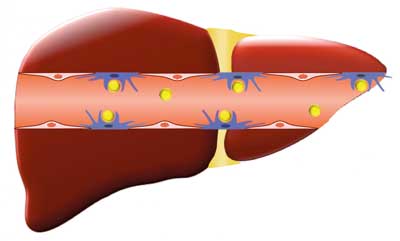 Nanomedicine researchers find new use for 70-year-old drug.
Nanomedicine researchers find new use for 70-year-old drug.
Nov 6th, 2017
Read more
 Scientists have for the first time, developed nanoscale devices that divide incident white light into its component colors based on the direction of illumination, or directs these colors to a predetermined set of output angles.
Scientists have for the first time, developed nanoscale devices that divide incident white light into its component colors based on the direction of illumination, or directs these colors to a predetermined set of output angles.















 Subscribe to our Nanotechnology News feed
Subscribe to our Nanotechnology News feed